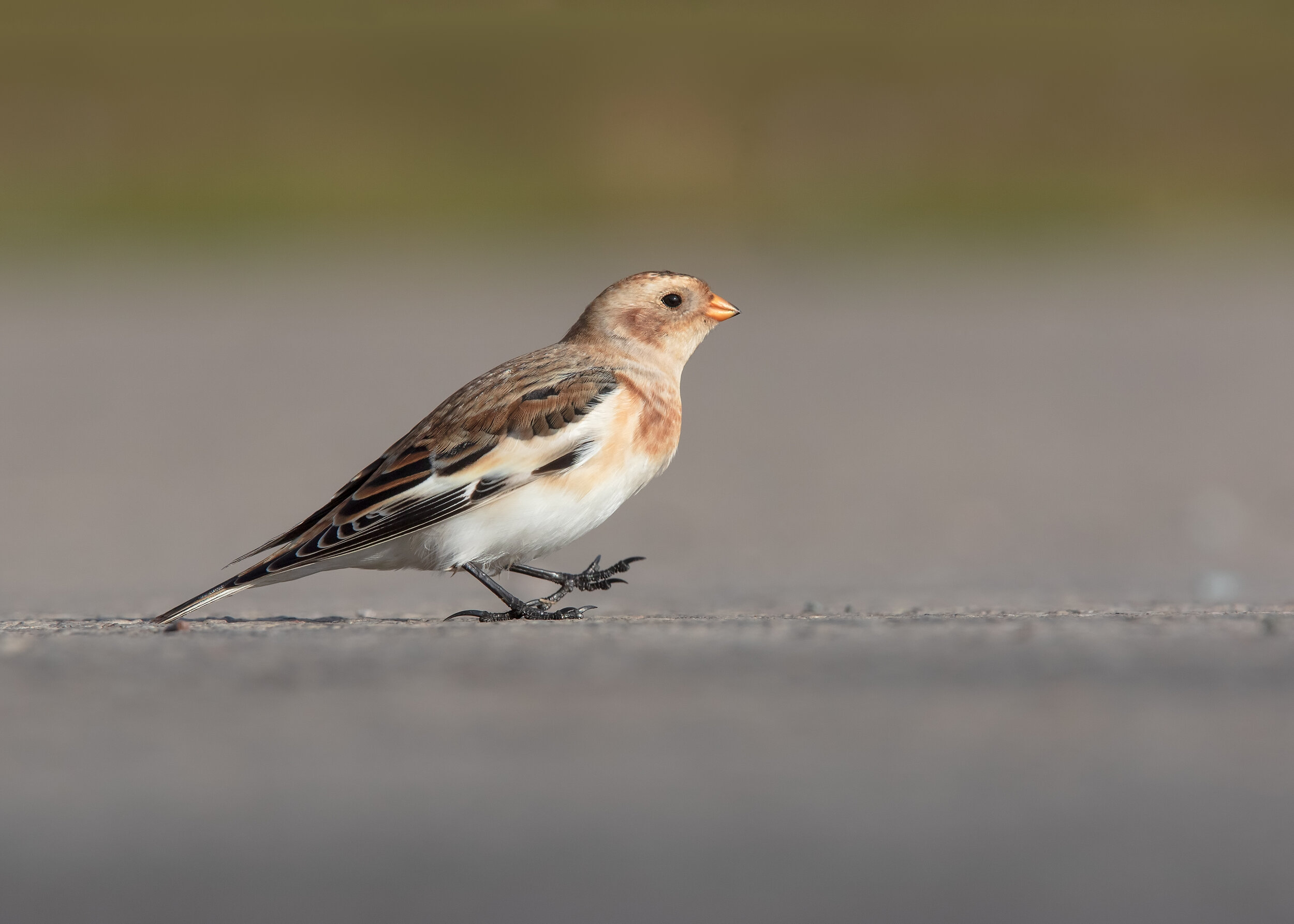To be fair, we haven’t had a bad Autumn so far with regard to the variety of migratory birds turning up. The usual Redwing, Fieldfare and Brambling were a little later than usual but in the last two weeks, with temps and weather deteriorating, we’ve just started to get some sizable flocks coming through. We also had a surprise visit on the Blorenge mountain in Blaenavon in the form of this beautiful male Snow Bunting. Hard to believe this male was totally black and white in it’s breeding plumage but as they move off the snow-covered mountains from anywhere between Scotland to Alaska, they usually end up wintering in areas where there isn’t any snow, so they actually darken their overall plumage to help keep them camouflaged to their surroundings. We usually get one or two arriving this time of year, often picked up on coastal paths, especially during cold winters where they’re pushed further south. If you got to see the bird yourself, you would have seen how tame the bird was around people. It would literally walk straight up to you and feed around your feet: You tend to find birds that are from these high altitudes or harsh environments, that they aren’t scared of people, after all, they very rarely encounter people, therefore haven’t learned to fear us.
As you can see, some of the photo’s are in the actual car park! I included a picture of my car wheel as the background to give you a sense of place.
I’m almost done with my Mimicking Firecrest writeup. It’s taken some time to accumulate my data recordings into anything conclusive but I realise now that It’s not always possible to draw conclusions from one season so I’m not putting too much pressure on myself. I have found a few more mimicking species this week though, this time in the form of a Blue Tit, which was following a Long-tailed Tit flock around, as most small birds do this time of year for security. This mimic makes a lot more sense to me, as in order to keep up with a Long-tailed Tit flock, which are constantly on the move, you either need the same high energy, or you need a tactic to slow them down, which is exactly what I believe this bird is doing. Long-tailed Tit families are loyal to each other and won’t leave a man behind. They ensure this by constantly communicating with each other to ensure they don’t stray away too far from each other and it’s this behaviour that I believe the Blue Tit is exploiting. By mimicking the LTT call, whether the Long-tailed Tits think it’s one of their own or not, they will come to investigate, which is exactly what happened in the middle of this recording where a single call made was actually a LTT. See if you can pick out which one is the real LTT, if you can’t, then the Blue Tit has done a good job!






